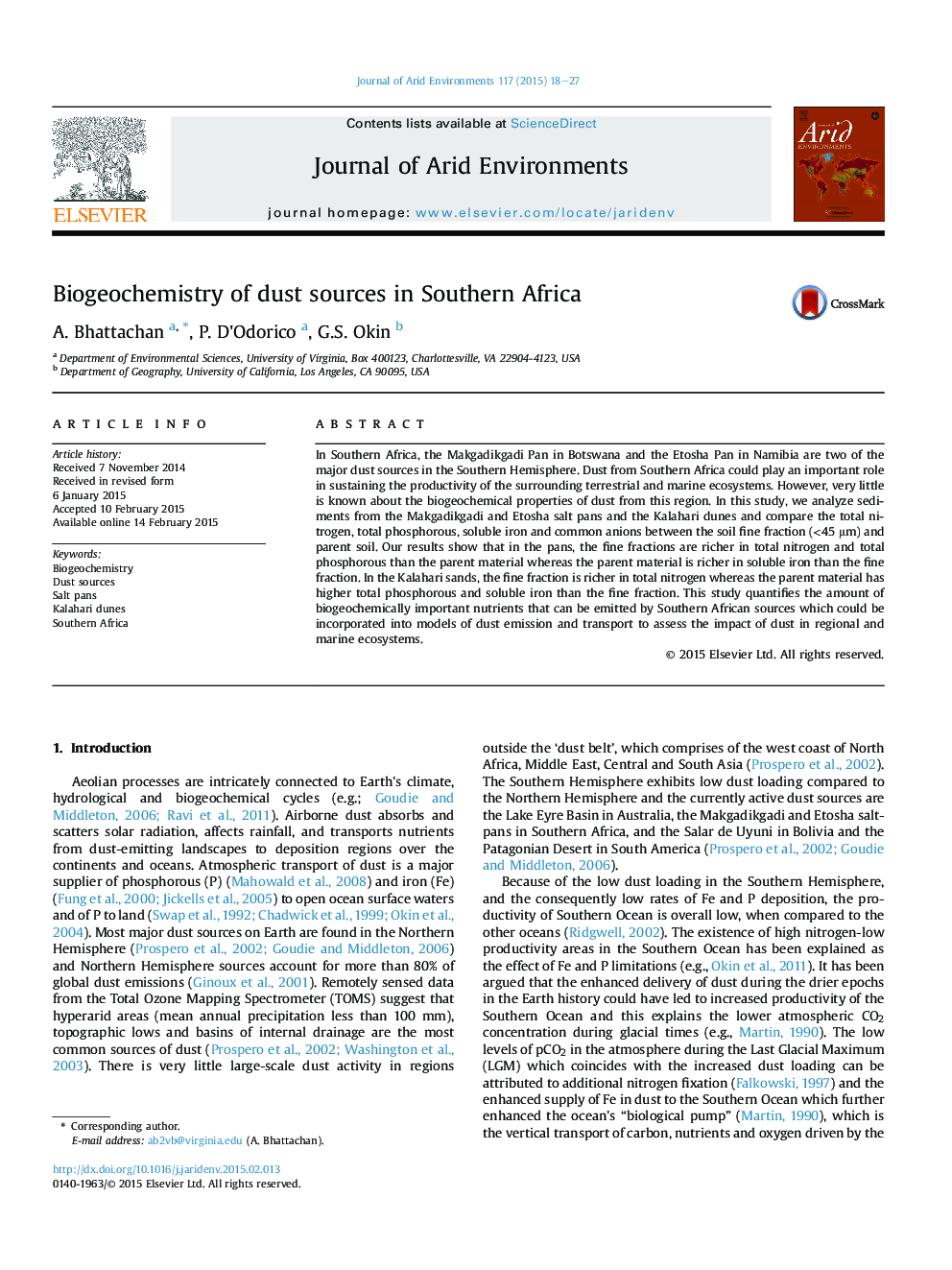| Article ID | Journal | Published Year | Pages | File Type |
|---|---|---|---|---|
| 4392857 | Journal of Arid Environments | 2015 | 10 Pages |
Abstract
In Southern Africa, the Makgadikgadi Pan in Botswana and the Etosha Pan in Namibia are two of the major dust sources in the Southern Hemisphere. Dust from Southern Africa could play an important role in sustaining the productivity of the surrounding terrestrial and marine ecosystems. However, very little is known about the biogeochemical properties of dust from this region. In this study, we analyze sediments from the Makgadikgadi and Etosha salt pans and the Kalahari dunes and compare the total nitrogen, total phosphorous, soluble iron and common anions between the soil fine fraction (<45 μm) and parent soil. Our results show that in the pans, the fine fractions are richer in total nitrogen and total phosphorous than the parent material whereas the parent material is richer in soluble iron than the fine fraction. In the Kalahari sands, the fine fraction is richer in total nitrogen whereas the parent material has higher total phosphorous and soluble iron than the fine fraction. This study quantifies the amount of biogeochemically important nutrients that can be emitted by Southern African sources which could be incorporated into models of dust emission and transport to assess the impact of dust in regional and marine ecosystems.
Related Topics
Physical Sciences and Engineering
Earth and Planetary Sciences
Earth-Surface Processes
Authors
A. Bhattachan, P. D'Odorico, G.S. Okin,
